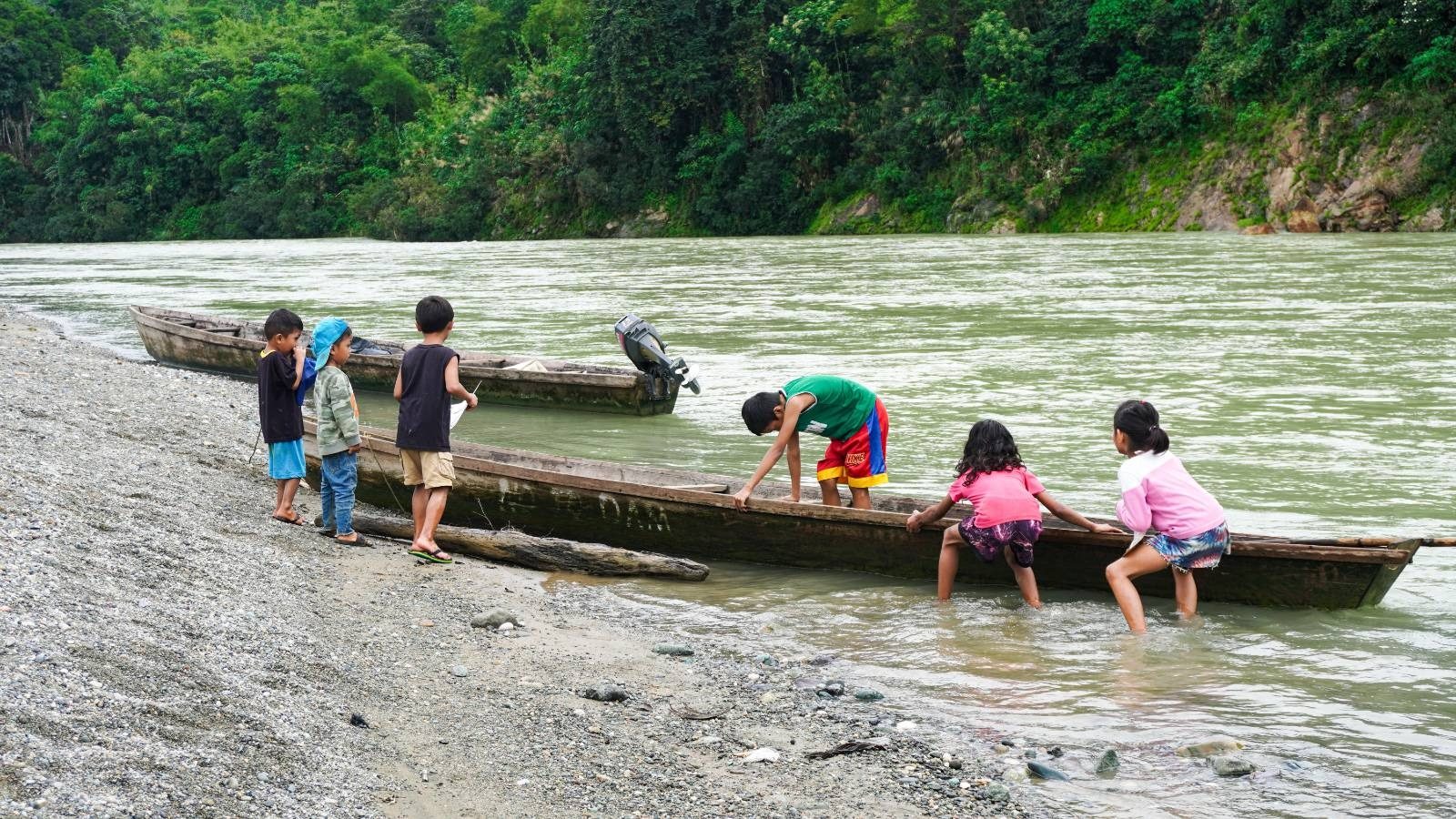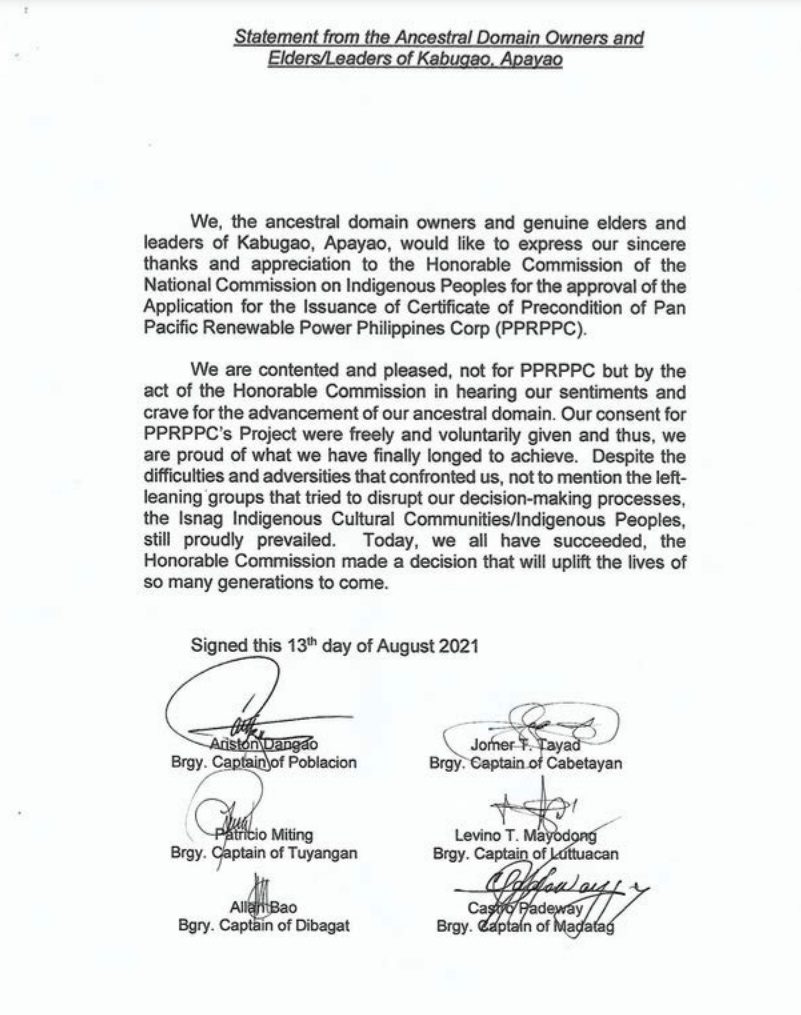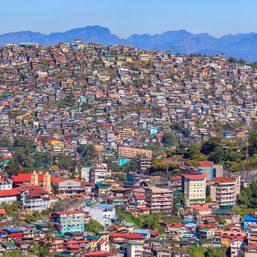SUMMARY
This is AI generated summarization, which may have errors. For context, always refer to the full article.

VIGAN, Philippines – Jimmy Basan remembers a childhood spent around a creek in Bulu, a village in Kabugao, the capital of Apayao province.
“My father planted many trees and farmed,” said the 67-year-old Isnag community elder. “The trees and the coconuts still provide us with fruits.”
The bounty didn’t just come from the land. Basan’s family fished in the tributary of the Apayao-Abulog River.
The rich earth and clear waters are more than just sources of food, Basan told Rappler in an interview on January 12. The land also cradles the remains of Basan’s ancestors.
“Naitabonda idiay Bulu, idiay igid ti balaymi met lang da tatang, diay nanang ken tatangna, diay lolana ken dagigiay daddumma pay nga apapongmi.” said Basan. (We buried my father there, near our old house. So were his parents and their parents, and generations of our ancestors.)
Isnag culture prohibits, as much as possible, moving the remains of their ancestors or disturbing their burial grounds, Basan told Rappler.
The Isnag are the indigenous peoples of Apayao, with some also occupying parts of Abra in the Cordillera region. Each clan has its burial sites, usually near the houses.
“Before tombs became popular, we buried our dead. Then we planted subray (San Francisco or Buenavista plant) around them, to mark their graves and warn people not to disturb the place,” Basan said.
“Disturbing them would bring perils,” elders warned the young Basan. Invaders, they told him, “may suffer from bad luck, illness, and even death.”
Basan farmed for years before working abroad as an electrician to support the clan. He has since retired, his children all professionals, and now lives in Poblacion, the center of Kabugao.
Yet the land remains sacred to the elder, who also sees the river as a link between their community of 277 households to other clans sprawled across almost a thousand hectares.
The people of the river protect some areas in their forested ancestral land, like portions of creeks and pockets of trees, from hunting or food gathering activities.
The bans are handed down through generations either because of the belief that spirits live in these places or because these form part of lapat, the indigenous practice of conserving natural resources.
“These are the reasons why we cannot allow the dams to prosper, to flood our lands and take away our livelihood, culture and identity,” Basan said.

Bulu, Basan’s childhood home, is now one of many villages endangered by the Pan Pacific Renewable Power Philippines Corporation’s (PPRPPC) P19.8-billion 150-megawatt Gened 1 dam project.
The corporation plans a total of four hydropower dam projects on the 175-kilometer Apayao-Abulog River, the ninth largest river system in the country with a drainage area covering 3,372 square kilometers.
Basan believes his people face an existential threat. But other elders believe differently.
Uplifting lives?
Development plans have split once united communities in Apayao since 2011, when PPRPPC secured a hydropower service contract from the Department of Energy for a 600-MW megadam.
In 2016, PPRPPC redesigned it into four dams: the 335-MW Gened 2 HEPP costing P51.3 billion, the 191-MW Aoan Dam, and the 170-MW Calanasan Dam.
The second project still needs to get the consent of indigenous peoples under the law protecting ancestral lands. The National Commission on Indigenous Peoples (NCIP) en banc gave Gened 1 verbal approval on August 13, 2021.
A group of 56 “genuine elders and leaders” hailed the NCIP’s decision, quoting the Gened 1 developer’s rationale that it “will uplift the lives of so many generations to come.”
The document promised “a clean and sustainable alternative energy source” and “long-term solution to the increasing demand for power in the Philippines.”
It is easy to see why the community is split. The Indigineous People’s Rights Act of 1997 (IPRA) mandates royalties for ancestral landowners. Dam supporters say Gened 1 alone could provide a P192.41-million share during the 25-year operation period.

PPRPPC has promised to cushion affected communities with social development programs.
A people’s doom
Other community leaders, like 51-year-old Angelo Umingli from Poblacion, believed that the project would spell their doom as a people.
“Many people (here) are dependent on the Apayao River. That is why they call us river people,” he said in an interview on January 13.
Former Apayao provincial administrator Ramos Bongui pointed out in December 2021 that tourism is a better option to spur local development.
“Our river is a navigable river. It has been used as a regular transportation for the Isnag. Even today, when the road is closed, you can always use the river,” he explained.
“Now, if we can publicize the excitement of rowing on the river, downstream and upstream, this will become the hub of tourism,” he added.

Umingil, a three-term provincial board member from 2007 until 2016, said the project will submerge Barangays Bulu, Magabta, Poblacion, parts of Waga, and portions of Balag in Pudtol municipality.
It will also impact the villages of Laco, Badduat, Luttuacan, Nagbabalayan, and Cabetayan, also in Kabugao, Umingli added.
Peasant group Alyansa ti Pesante iti Taeng Kordilyera warned that the dam would steal the livelihood of boatmen and fisherfolk, and force farmers to abandon swidden farms.
Three more local communities would become part of the reservoir if Gened 2 pushes through, according to Umingli.
In the neighboring town of Calanasan, the second dam will impact on their Poblacion and the villages of Eleazar, Kabugawan, Langnao, Lubong, Namaltugan, Tubang, and Tubongan.
“Just imagine, if they succeed in constructing all of the four dams,” he said. “We cannot allow them to continue the project, to sacrifice and displace us.” – Rappler.com
Sherwin De Vera is a Luzon-based journalist and an awardee of the Aries Rufo Journalism Fellowship.
Add a comment
How does this make you feel?










There are no comments yet. Add your comment to start the conversation.